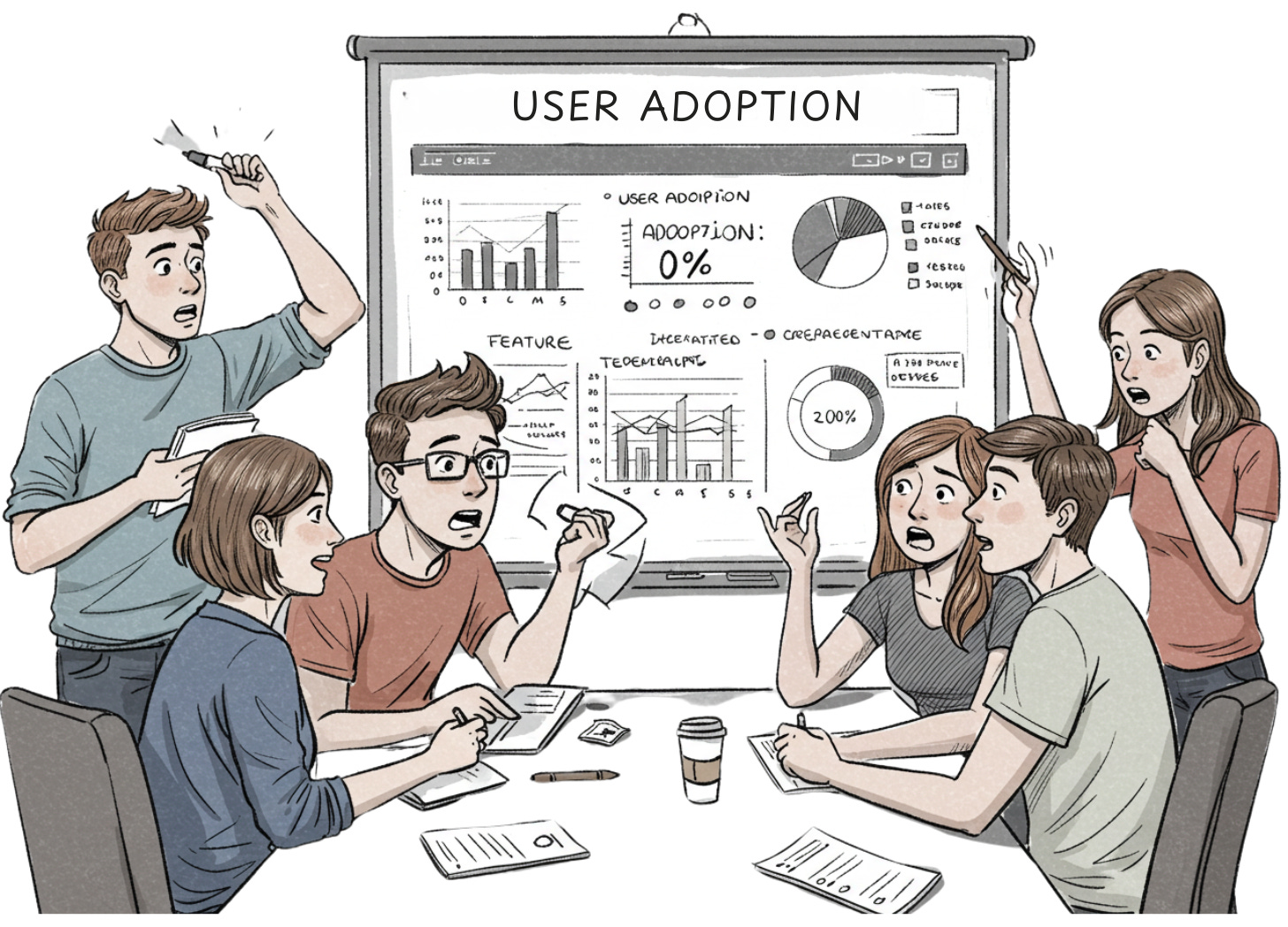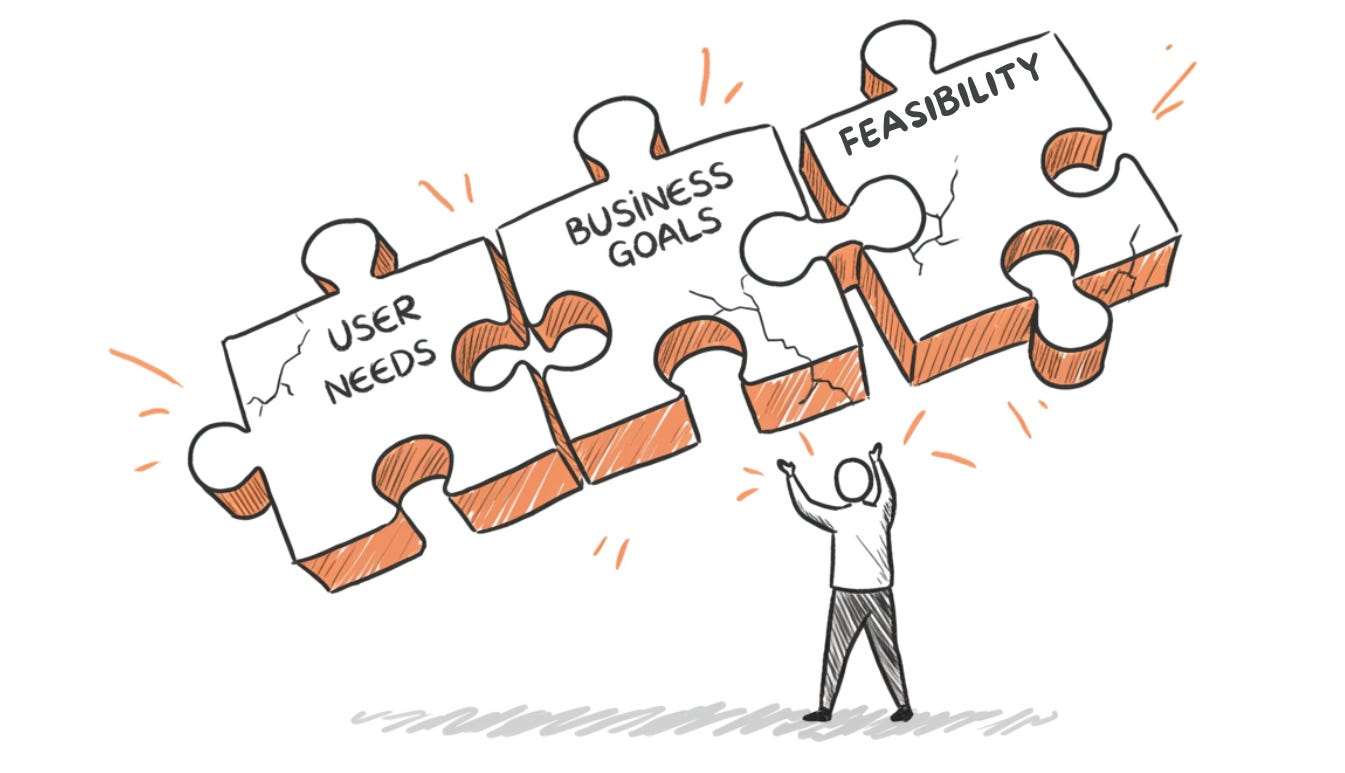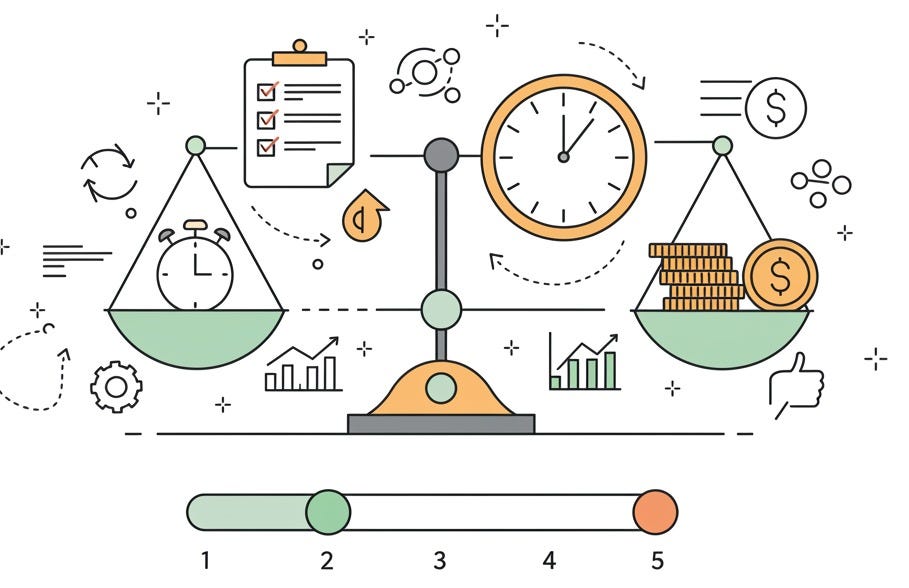Which Tools do Scrum Teams Use to Build the Right Product?
And resources to learn about these tools
Hello 👋, It’s Vibhor. Welcome to the 🔥 paid member only🔥 edition of Winning Strategy: A newsletter focused on enhancing product, process, team, and career performance. Many subscribers expense this newsletter to their Learning & Development budget. Here’s an expense template to send to your manager.
1121 hours of dev time. 370 cups of coffee. 21 sprints of work.
And nobody used the feature.
A few years back, this happened to a Scrum team I know about. It became a big deal, so everyone heard their story.
They strategically planned and executed a new dashboard component that the Product Owner believed would transform how users interacted with their platform.
But when they released it, usage data showed that less than 2% of users even clicked on it.
It wasn't because the team lacked technical skills.
No!
They were missing something more fundamental: the right tools to validate whether they should build the feature in the first place.
In my experience working with dozens of Agile teams, I've noticed that teams that consistently deliver valuable products don't only focus on HOW to build; they use specific tools to determine WHAT to build.
You don’t find a mention of these tools in typical Scrum certifications.
Yet they're the difference between a product that gains traction and one that collects dust…digitally.
This can be easily resolved, though.
Today, I'm sharing my list of essential tools (plus learning resources) that high-performing Scrum teams use to make sure they build the right product.
Ready?
Let’s get started.
But wait…What makes a product (or a feature) RIGHT in the first place?
NOT luck.
It’s by hitting the sweet spot between three key factors:
Get any of these wrong, and you risk wasting time, effort, and resources on something that doesn’t deliver.
That's precisely how you end up with those 1121 wasted hours.
1. User Needs and Value
First, it must solve real users’ PROBLEMS.
Not imagined ones. Not "wouldn't it be cool if…" features. Real, validated user needs that create genuine value.
The right product starts with your users.
It meets their needs, or fulfills a desire they didn’t even know they had.
2. Business Goals and Outcomes
Even if users love a product, it’s the wrong product if it doesn’t meet your organization’s strategic objectives.
Your product doesn't exist in a vacuum. If it is not generating revenue, nobody will keep building it.
The right product aligns with your company’s strategy and delivers measurable business value, for example: growing revenue, cutting costs, or expanding into new markets.
The right product (or feature or solution) answers "yes" to the following questions:
Does this align with the company's vision and goals?
Can we measure its impact on business metrics?
Is there a clear return on investment?
3. Feasibility and Execution
The best ideas are worthless if you can’t execute them.
The right product is both technically feasible and can be delivered within the team’s constraints:
available time
available budget
available technology
When these 3 factors align, your team creates something that users love, the business values, and the team can deliver.
Before they start writing the first line of code, successful teams find the answer to this question:
Is this the right thing to build?
And they answer this using the following tools
Tool #1: Experiment Canvas (for User Needs)
To design small experiments that validate user-related hypotheses.
What is it:
A structured template that helps teams design and run quick experiments to test assumptions about user needs.
It is your scientific method for product decisions:
What do we assume?
How can we test this assumption?
What results would prove the assumption right (or wrong)?
When to use it:
Use this when you're facing "I think" statements like:
"I think users will love this feature"
"I think this is their biggest pain point"
"I think they'll pay for this solution"
It's your "I trust, but let’s verify" tool for user insights.
Learn more about it here - Experiment Canvas
Tool #2: Lightning Decision Jam(for Business Goals)
To quickly identify and prioritize business problems and solutions.
What is it:
A structured, time-boxed workshop that takes teams from problems to prioritized solutions in under 60 minutes.
It helps teams break decision deadlocks:
Everyone writes problems (no interruptions)
Everyone votes (no politics)
Top problems get solutions (no criticizing)
Solutions get prioritized (no unrealistic plans)
Action items get assigned
When to use it:
Use this when your team is struggling with:
Conflicting priorities between team members or stakeholders
A lack of clarity around business problems or goals
Lengthy, unproductive discussions that don’t lead to actionable outcomes
Or when you hear statements like:
"We can't agree on what to do first"
"Our meetings go nowhere"
"Everyone has different priorities"
"We keep discussing but never decide"
It's your "enough talking, let's decide" tool.
Learn more about it here - Lightning Decision Jam
Tool #3: Return on Time Invested (for Feasibility)
To evaluate whether the team activities or features are worth the effort.
What is it:
A simple framework that measures whether time spent on activities delivers appropriate value in return.
It is your ROI calculator, but for time:
Rate activities from 1 (waste of time) to 5 (extremely valuable)
Calculate the time cost
Compare value against time invested
Make data-driven decisions about where to spend effort
When to use it?
Use this when you need to evaluate the worth of:
Meetings or events
Ongoing projects that feel misaligned with goals
Features that require significant effort but may not deliver enough value
Perfect when you hear:
"These meetings feel wasteful"
"We're so busy but getting nowhere"
"Is this feature worth the effort?"
"We need to be more efficient"
Examples:
A feature your team has been working on for weeks isn’t gaining user traction. You can use ROTI to evaluate whether continued investment is worth it or if the team should pivot to higher-impact opportunities
Your team is juggling multiple projects but struggling to deliver meaningful results. Use ROTI to identify which projects are yielding the best outcomes for the time spent and prioritize accordingly
It's your "time well spent, or not?" tool.






